We find an oasis of delicious calm in the middle of the madness of Shibuya, the heart of Tokyo.
Shibuya Scramble Crossing
Annie had gone to spend the day in Tokyo, and the plan was for me to meet her there after work for dinner. Our plan changed, but we were fortunate that my colleague also had dinner plans with his wife in Tokyo that night, and extended the invitation to us to join him. We took the train up to Shibuya Station, where we met up with our respective wives.
My colleague had a friend, now living in Tokyo with his Japanese wife, who brought us via short taxi ride to Rakushokushu Maru Restaurant in nearby Aoyama. The restaurant’s small storefront is about a block down a narrow street from the main Aoyama Dori thoroughfare. The restaurant itself is actually midway down a steep flight of stairs (watch your step!). But once you find the landing and enter the dining area, you completely forget about the harsh concrete jungle above.
No Ordinary Meal
There is a bar in front of the open kitchen, where diners can sit and watch the many chefs behind it meticulously preparing their dishes. Along the facing wall are the regular tables and chairs where our party was seated. Our friend explained that this restaurant served a prix fixe set meal which changed monthly and ranged between 5000 to 7000 yen (USF $60-80). This wasn’t going to be some inexpensive izakaya ala carte dinner!
The first dish out was a small, jelly-like cake made of pureed corn, topped with minced okra and served in a light dashi. It was smooth, exquisite, and surprising considering how they managed to control the stickiness of the okra.
Next came the sashimi platter. Besides the meltingly beautiful tuna, they also served some sweet kanpachi as well as my favorite, sanma (mackerel pike)
Corn Cake with Okra, Sashimi Platter
Following that came a small bowl containing cucumber slices, large chunks of prawn, and fishballs swimming in a slightly salty, unctuous broth thickened with kudzu starch. Next came a platter with assorted seasonal ingredients: grilled fish, boiled black beans, broiled eggplant with miso, braised kabocha squash and octopus. The broiled eggplant was delicious, but the tako (octopus) takes the cake. It was so tender that it literally melted in my mouth!
Wait for It
I should note that each dish was carefully prepared and assembled right before serving, which meant that the dishes took a long time getting out of the kitchen. This meal is not a fast-food meal by any means. It is definite slow eating, where you have a chance to savor your dishes and also chit-chat with your dining partners.
The highlight dish of the night was this small bowl of noodles, served simply with sliced shiitake mushrooms and a barely cooked egg. You break up and mix the egg yolk into the dish, where all that delicious, creamy yolk melds with the noodles. It’s just one of those wonderful dishes that is so good it can bring tears to your eyes.
Another potential tear-jerker is the pimiento de padron pepper, served alongside other tempura-fried items like cherry tomato and fig with a fig-miso jam. Known as culinary Russian roulette, 1 in 10 of these normally mild peppers will set your mouth on fire. Luckily, just like the previous night’s dinner at Maimon, I managed to avoid the hot one.
Noodles with Soft-Boiled Egg, Tempura Plate
The last dish was a bowl of chazuke made with their special, claypot steamed rice. I must admit to not being very impressed with the rice. But then again, I was pretty full from all the rest of the food, so it might have been the law of diminishing returns in effect. They did take the leftover rice and turn it into a nice onigiri and packaged it in a pretty little doggy bag for us.
For drinks, I had ordered a glass of an off-dry umeshu (honey plum wine) – quite nice. For dessert we got champagne. But this champagne came in the form of a jelly, spooned on top of almond tofu and fresh peach slices. It was a nice contrast of sweet-acid flavors and smooth-crunchy textures.
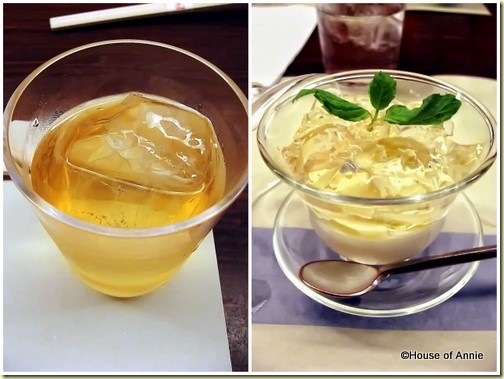
If I had to compare, I would say that this meal would be closer to Chez Panisse in both style and price. When all was said and done, our dinner had run over 3 hours and the price per head came to 6000 yen (about USD $70). For the experience of tasting the exquisite dishes created by these caring and skilled chefs, plus the attentive (and English-speaking!) service, I would say it was worth it.
What do you think? Would you pay that price for a meal like this? Leave a comment below!
I only wish that we had started dinner earlier, or that our hotel was closer to the restaurant. We got out of the restaurant past 11 pm and we were worried that we wouldn’t be able to catch the next train back to Shonandai. Even at that hour, though, Shibuya was still bustling with activity.
Shibuya Scramble Crossing at Midnight
Special thanks go to my coworker, Slava, for letting us tag along for dinner. And to Mike for helping clean up the low-light pics that I took.
Aloha, Nate
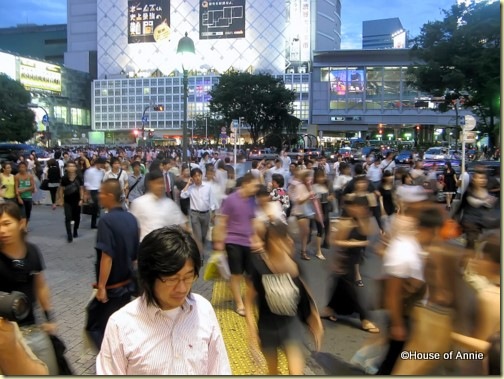
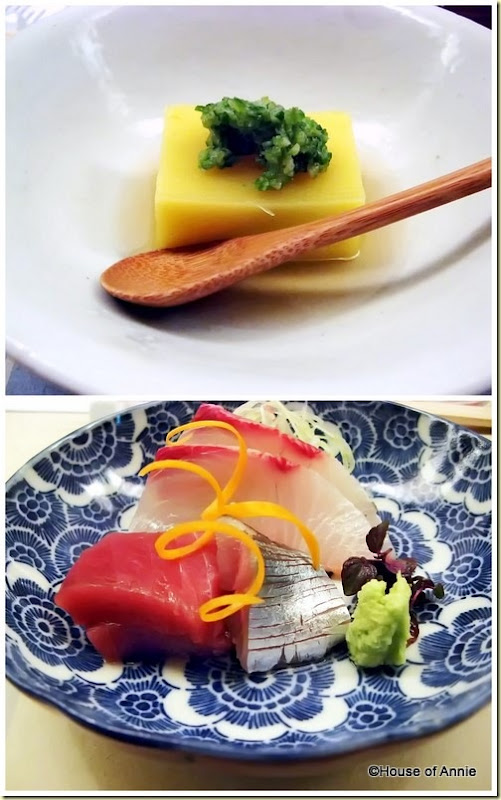
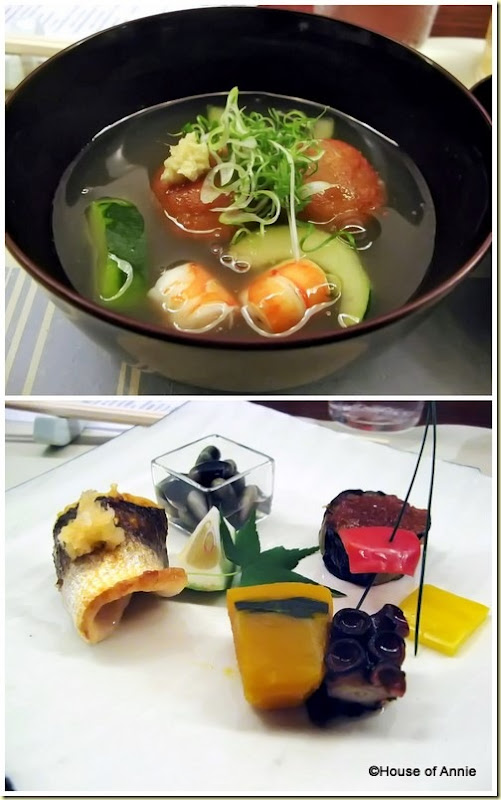
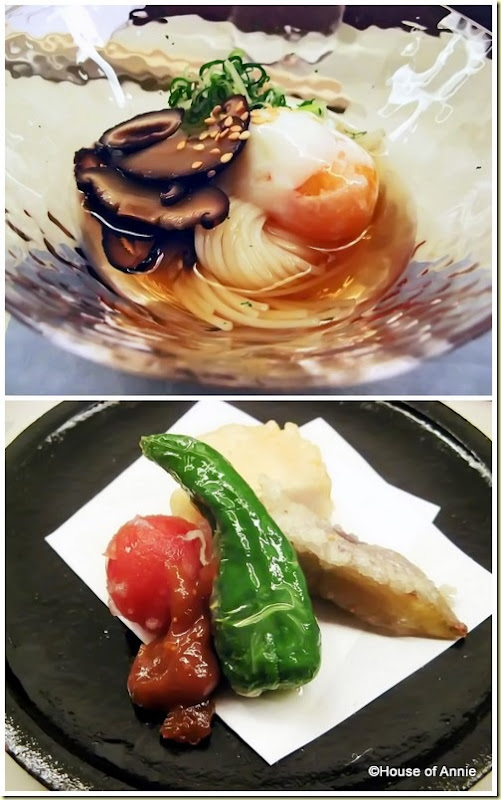
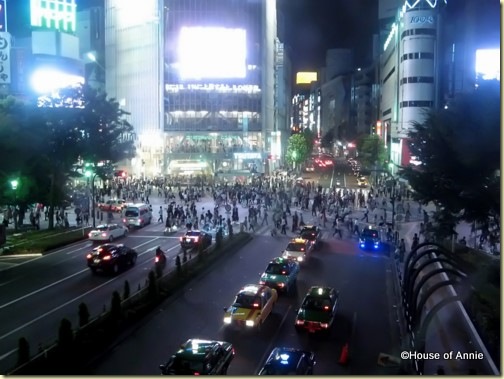
Love your post as always! Annie, i love your crisp and clean photos so much. May I ask what camera you are using?
Sherry –
For this trip, I didn’t bring the DSLR. We just took the Canon A710IS point and shoot. In the restaurant, there was pretty dim lighting so I bumped the ISO to 800. Of course, this led to grainy shots. So that’s why I asked our friend Mike, who’s more proficient in PhotoShop, to help fix the pics.
Great question!
Wow, what a beautiful meal. I’m with you, when food gets so good, it does bring tears to your eyes! 🙂
So I’m curious with reading your eating adventures in Tokyo and beyond, did you feel you could interact with the wait staff or chefs, or did you rely mostly on your co-workers to help with ordering? Wondering what it would be like as a single English-speaking traveler visiting and eating in Japan. (Yep, I want to plan a trip now reading your posts!)
Ben,
Great question.
The staff at Maru were proficient enough in English, and the menu was in English, so that was a big help. In general, we found Japan to be pretty tourist-friendly, with lots of signage in English and enough helpful people who could point us in the right direction. I’m tickled that you are thinking about going to Japan after reading our posts. (I wonder how many other readers are thinking the same thing!). We’ll probably do a wrap-up post after we’re all done with this Japan series, to talk about some things we learned and some tips for future travelers.
Stay tuned!
It’s a wonderful dinner, all the dishes look incredible! Definitely worth the price!
I think a kaiseki dinner is definitely worth the price for all the service given for the duration of the meal. It truly is an exquisite experience. I had a 12 course kaiseki at a ryokan in Komagane during my last trip there (in June) and I enjoyed every bit of it.